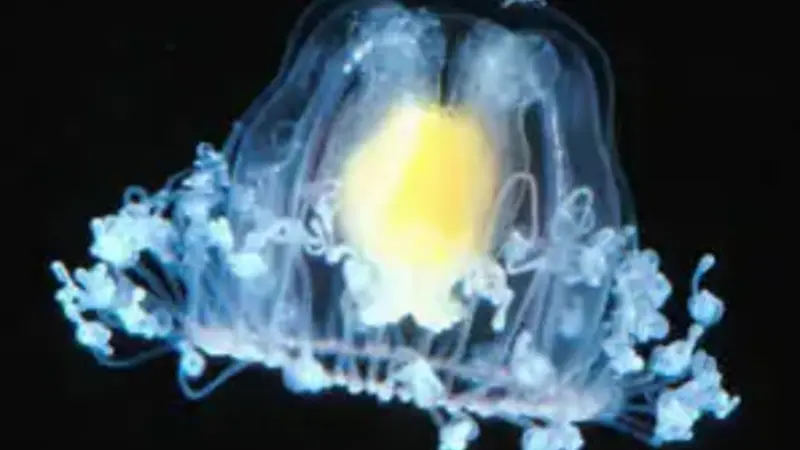The animal kingdom is filled with remarkable creatures with unique characteristics and survival strategies. Among these, the Turritopsis nutricula, commonly known as the immortal jellyfish, stands out for its extraordinary ability to seemingly cheat death, positioning itself as a symbol of biological immortality.
This jellyfish has captivated scientists and the general public with its ability to revert to a juvenile form after reaching sexual maturity, a feat unparalleled in the animal kingdom. In this article, we delve into the fascinating life cycle of the immortal jellyfish, exploring the mechanics of its unique survival strategy and its implications for science.
The Life Cycle of Turritopsis nutricula
i) Sexual Reproduction and Early Development
Like other jellyfish species, Turritopsis nutricula reproduces sexually. The process begins with the male releasing sperm into the water column, fertilizing eggs inside the female’s stomach. The fertilized eggs develop into larvae, which attach to the female’s mouth or oral arms during the embryonic stage. After this stage, they transform into free-swimming planulae, eventually detaching from their mother to drift along the water’s surface.
ii) The Polyp Stage and Asexual Reproduction
The planulae settle on complex, stationary objects, such as rocks, where they transform into polyps. These polyps, fixed and fed on microscopic plankton and zooplankton, begin forming colonies. Each colony consists of multiple identical polyps connected by providing tubes, sharing nutrients equally. These colonies can remain in the polyp stage for years. Under favourable conditions, the polyps develop horizontal grooves, with the topmost groove maturing first and detaching as a free-swimming jellyfish.
iii) The Unique Transformation to Immortality
What sets the immortal jellyfish apart from other species is its ability to revert to the polyp stage after sexual reproduction. While most jellyfish die after reaching sexual maturity, Turritopsis nutricula can transform back into a polyp, thereby restarting the process of asexual reproduction. This cycle of reverting from an adult medusa to a juvenile polyp can continue indefinitely, rendering the jellyfish immortal.
The Science Behind the Immortality
The key to the immortal jellyfish’s longevity lies in a cellular process called transdifferentiation. This process allows the jellyfish to alter the differentiated state of its cells, transforming them into new cell types. During transdifferentiation, the medusa (adult jellyfish) transforms into polyps of a new colony. The umbrella of the medusa reverts, and its tentacles and mesoglea are resorbed. The reverted medusa then attaches itself to a substrate and gives rise to new polyps, forming a new colony.
Implications for Science and Medicine
The immortal jellyfish’s unique life cycle has significant scientific implications, particularly in cellular biology and regenerative medicine. Understanding the mechanisms behind transdifferentiation in Turritopsis nutricula could provide insights into cellular regeneration and ageing processes in humans. It raises the possibility of developing new therapies for age-related diseases and injuries, potentially revolutionizing medical science.
Conclusion
Turritopsis nutricula, the immortal jellyfish, is a testament to nature’s extraordinary adaptability and resilience. Its ability to revert to a juvenile form after sexual maturity challenges our understanding of the animal life cycle and ageing process. The study of this remarkable creature sheds light on the mysteries of biological immortality and holds promise for advancements in human health and longevity. As research continues, the immortal jellyfish will continue to fascinate and inspire scientists and laypeople, reminding us of the endless wonders of the natural world.
